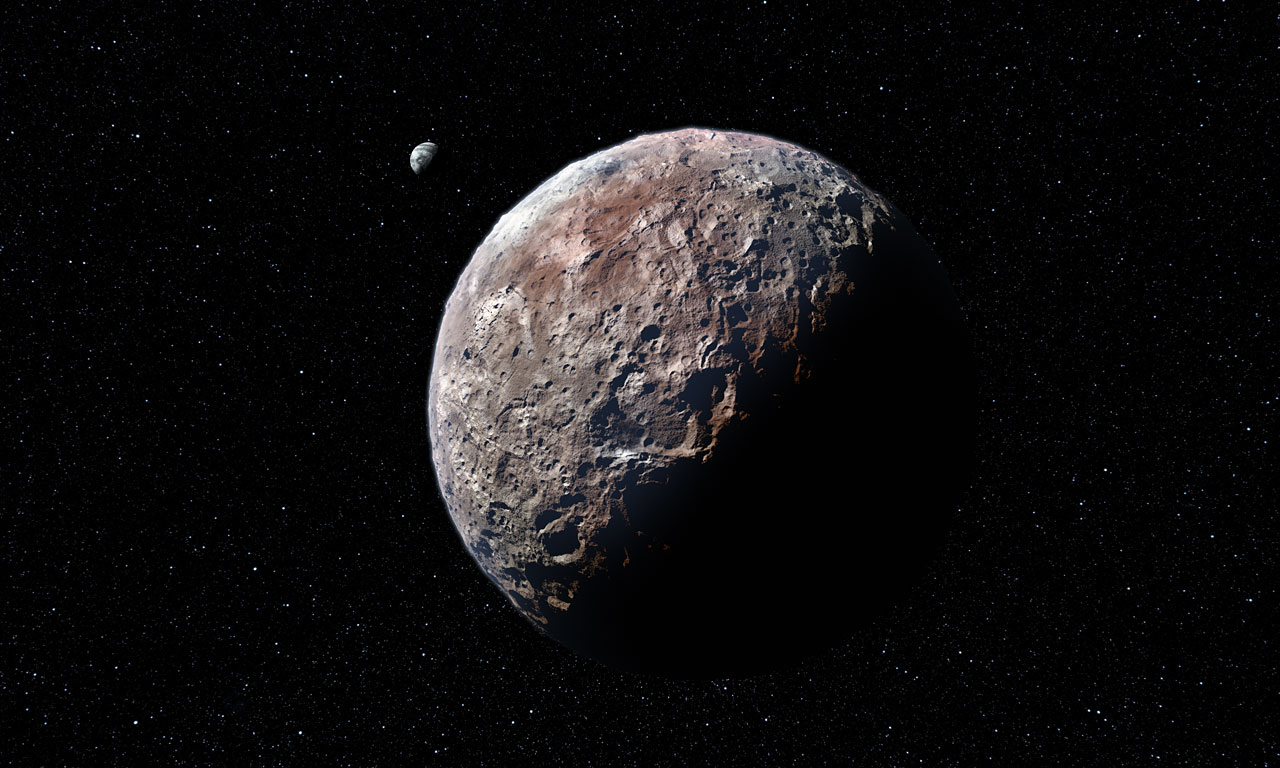All the excitement of New Horizons fulfilling its primary mission of exploring Pluto has brought many to question again the resolution given forth by the 2006 AIU decision ‘demoting’ Pluto from ‘Plant’ to ‘Dwarf Plant’ status.
First off, in the realm of categorizing things generally you
have main categories that don’t overlap, with sub categories that continue
until you reach a very specific end point. The AIU by defining both ‘Planet’ and
‘Dwarf Planet’ as separate categories not subsets of each other has created undue
confusion. A Dwarf Planet should be a sub categories of Planet not separate unto
itself. Shouldn’t it be ‘Dwarf World’ or anything else that does not contain
the word ‘Planet’ for which it is intended to be excluded?
I remember being quite enraged at the decision when it was
made, not because of Pluto’s change in status, but because of all the many
foibles found in the new Definition of Planet. For those not familiar with the New
Definition; I copy the following from the AIU’s official declaration:
Resolution B5
(1) A planet1 is a celestial body that (a) is in
orbit around the Sun, (b) has sufficient mass for its self-gravity to overcome
rigid body forces so that it assumes a hydrostatic equilibrium (nearly round)
shape, and (c) has cleared the neighbourhood around its orbit.
(2) A "dwarf planet" is a celestial body that (a)
is in orbit around the Sun, (b) has sufficient mass for its self-gravity to
overcome rigid body forces so that it assumes a hydrostatic equilibrium (nearly
round) shape2, (c) has not cleared the neighbourhood around its
orbit, and (d)is not a satellite.
(3) All other objects3,except satellites, orbiting
the Sun shall be referred to collectively as "Small Solar System
Bodies".
1 The eight planets are: Mercury, Venus, Earth,
Mars, Jupiter, Saturn, Uranus, and Neptune.
2 An IAU process will be established to assign
borderline objects to the dwarf planet or to another category.
3 These currently include most of the Solar System
asteroids, most Trans-Neptunian Objects (TNOs),comets, and other small bodies.
Resolution 6B
Pluto is a "dwarf planet" by the above definition
and is recognized as the prototype of a new category of Trans-Neptunian Objects1.
1 An IAU process will be established to select a
name for this category.
Note you don’t even get two words in when a foot note is
needed. That spells out what worlds are now defined as Planets. We will come
back to this foot note in a little bit.
First off, 1a states that a Planet ‘is in orbit around the Sun’ so Extra-solar Planets
are not Planets either because they choose the term ‘the Sun’ versus ‘a Sun’, ‘a
Star’; once again naming confusion, Extrasolar Planets are not planets but they
are ‘Extrasolar Planets’. Aside from that I guess once the Sun dies all the ‘Planets’
will stop being planets because ‘the Sun’ will no longer be a Sun. We know the existence
of isolated Planets that are without Stars and Extrasolar planets so why is
this not considered when defining the term ‘Planet’.
1b – no real issue here
1c – ‘has cleared the neighborhood around its orbit’. What
does that mean? It seems clear to me that would suggest that a world to be
known as a Planet must have remove all other objects from its orbital path. So
Clearly, Pluto has not done that, but wait look at the subject of Resolution 6B
“Pluto is a "dwarf planet" by the above definition and is recognized
as the prototype of a new category of Trans-Neptunian Objects1”
You might be interested to note that in fulfillment of the
promise made in the foot note of Resolution 6B comes the following declaration
from the AIU:
Plutoids are celestial
bodies in orbit around the Sun at a semimajor axis greater than that of Neptune
that have sufficient mass for their self-gravity to overcome rigid body forces
so that they assume a hydrostatic equilibrium (near-spherical) shape, and that
have not cleared the neighbourhood around their orbit. Satellites of plutoids
are not plutoids themselves, even if they are massive enough that their shape
is dictated by self-gravity. The two known and named plutoids are
Pluto and Eris. It is expected that more plutoids will be named as
science progresses and new discoveries are made.
It is very obvious to me that this
new group of objects along with Trans-Neptunian
Objects, which reach in the thousands, are clearly in Neptune’s orbital path.
So why is Neptune included in the foot note 1 of Resolution 5B
1 The eight planets are: Mercury, Venus, Earth,
Mars, Jupiter, Saturn, Uranus, and Neptune.
Truth be told, NO world on this list of ‘Planets’ meets this
finial criteria, which is the sole requirement that prevents Pluto from being
counted among the Planets. Had it been restated, ‘and has demonstrated gravitational
dominance within its orbit.’ Granted this does not take into account the possibility of Binary Planets of which Pluto would most certainly qualify if such a term ever does becomes official. It would have been the bees knees, but the AIU
really messed this one up. The AIU actually passed a resolution to correct the
issues of this resolution, but never have rectified the glaring issues involved.

